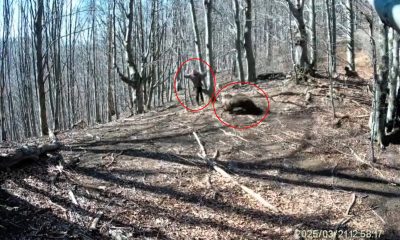Science
Archaeologists uncover the oldest known partial face fossil of a human ancestor in western Europe

The Discovery and Its Significance
In 2022, archaeologists in northern Spain made a groundbreaking discovery: a partial fossil of a human ancestor’s face, believed to be between 1.1 and 1.4 million years old. This find is the oldest of its kind in western Europe, offering a glimpse into the early presence of human ancestors in the region. The fossil, which includes a section of the left cheekbone and upper jaw, has sparked excitement among researchers. Eric Delson, a paleontologist at the American Museum of Natural History, described it as "exciting," noting it’s the first significant evidence of human remains exceeding one million years in western Europe. This discovery sheds light on the early migrations of human ancestors, suggesting their presence in Europe during a period previously underexplored.
Context in Human Migration
The Spanish fossil provides critical evidence of early human migration into Europe. Rick Potts, director of the Smithsonian’s Human Origins Program, suggests that this fossil is the first clear indicator of human ancestors venturing into Europe around 1.3 million years ago. While earlier fossils found in Georgia, at the crossroads of Eastern Europe and Asia, are older (estimated at 1.8 million years), the Spanish discovery indicates a shift in migration patterns. Potts speculates that these early explorers may have made temporary excursions into Europe, but there’s no evidence they established long-term settlements. This highlights the challenges early humans faced in adapting to new environments, perhaps leading to their eventual disappearance from the region.
Comparison with Other Fossils
The Spanish fossil bears similarities to Homo erectus, a species known for its spread from Africa to Asia and Europe around 2 million years ago. Rosa Huguet, an archaeologist at the Catalan Institute of Human Paleoecology, points out anatomical differences suggesting a possible new group or a unique trait within Homo erectus. This species, known for its upright posture and use of tools, eventually died out around 100,000 years ago. The comparison underscores the fossil’s importance in understanding the diversity of early humans. However, identifying the species from a fragment is challenging, as noted by Christoph Zollikofer of the University of Zurich, emphasizing the complexity of such determinations.
The Species and Its Attributes
Homo erectus is renowned for its significant role in human evolution. This species exhibited advanced traits, such as using fire and creating more sophisticated tools, which facilitated their migration. Their spread across continents, including Europe, is a testament to their adaptability. However, the transient presence suggested by the Spanish fossil indicates the difficulties of establishing long-term settlements in new territories, possibly due to resource scarcity or harsh climates. This fragment provides a rare glimpse into their tentative incursions, offering insights into the resilience and limitations of early humans.
The Challenge of Identification
Identifying early human species from fossil fragments is a daunting task, as highlighted by the Spanish discovery. Zollikofer notes the difficulty in determining the group of a single fragment, unlike more comprehensive finds. This challenge is evident in the decision to link the fossil to Homo erectus, considering both similarities and differences. The discovery underscores the need for further exploration and analysis to classify such finds accurately. This process not only tests scientific methods but also deepens our understanding of human evolution.
The Broader Implications
The Spanish fossil discovery is part of a larger narrative of human history. The Atapuerca Mountains, where the fossil was found, are a treasure trove of ancient remains, including those of Neanderthals and early Homo sapiens. This site’s richness highlights its importance as a window into our ancestral past. The new discovery bridges gaps in our knowledge, showing the tentative steps of early humans into Europe. Each find, like this fragment, enriches our understanding of migration, adaptation, and survival. As researchers continue to explore, each discovery brings us closer to unraveling the mysteries of our ancient journey.


















